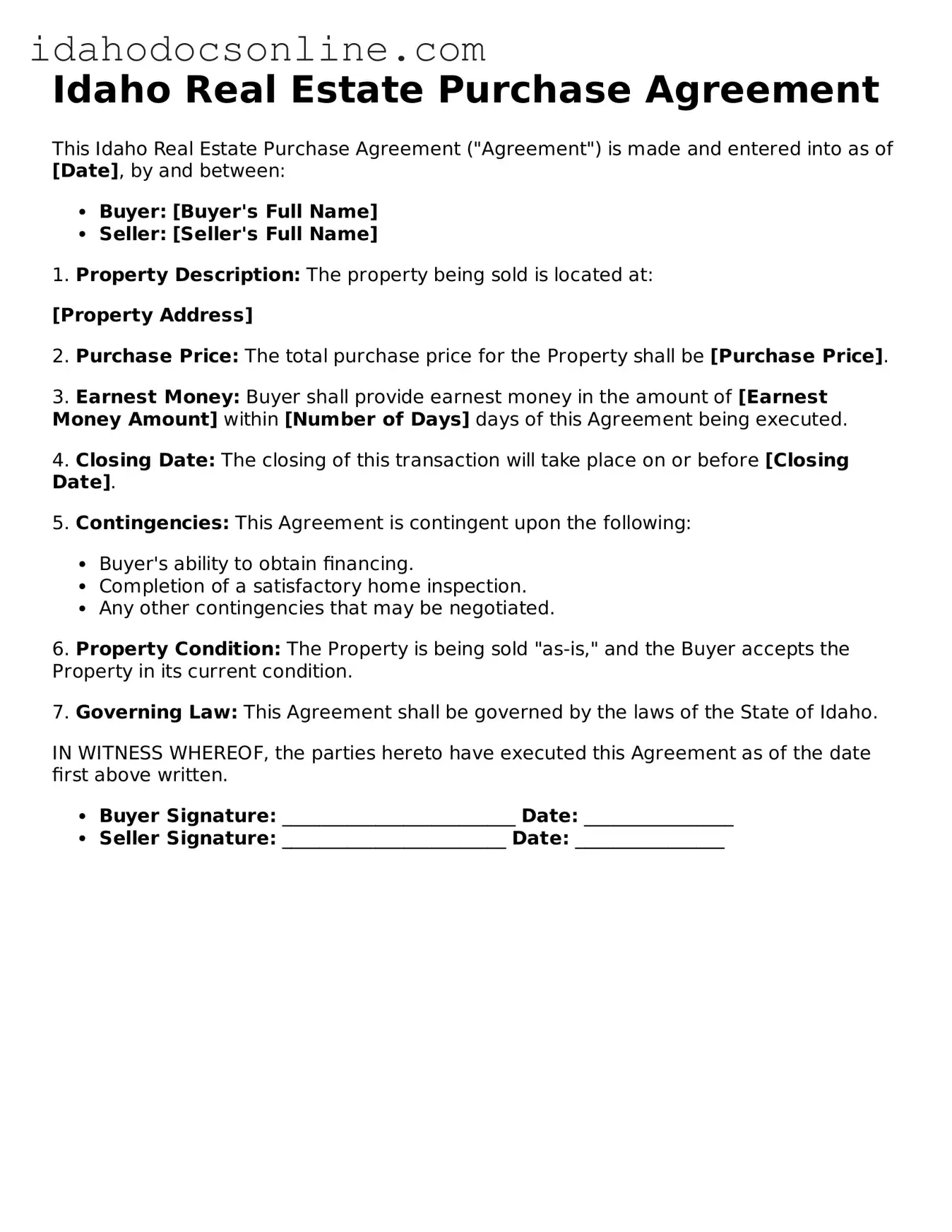Idaho Real Estate Purchase Agreement
This Idaho Real Estate Purchase Agreement ("Agreement") is made and entered into as of [Date], by and between:
- Buyer: [Buyer's Full Name]
- Seller: [Seller's Full Name]
1. Property Description: The property being sold is located at:
[Property Address]
2. Purchase Price: The total purchase price for the Property shall be [Purchase Price].
3. Earnest Money: Buyer shall provide earnest money in the amount of [Earnest Money Amount] within [Number of Days] days of this Agreement being executed.
4. Closing Date: The closing of this transaction will take place on or before [Closing Date].
5. Contingencies: This Agreement is contingent upon the following:
- Buyer's ability to obtain financing.
- Completion of a satisfactory home inspection.
- Any other contingencies that may be negotiated.
6. Property Condition: The Property is being sold "as-is," and the Buyer accepts the Property in its current condition.
7. Governing Law: This Agreement shall be governed by the laws of the State of Idaho.
IN WITNESS WHEREOF, the parties hereto have executed this Agreement as of the date first above written.
- Buyer Signature: _________________________ Date: ________________
- Seller Signature: ________________________ Date: ________________
